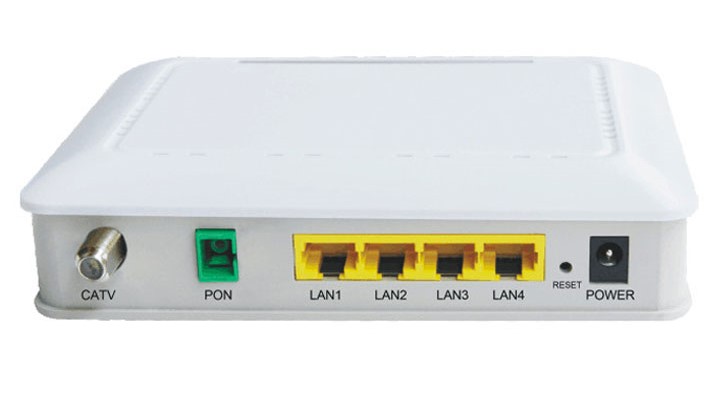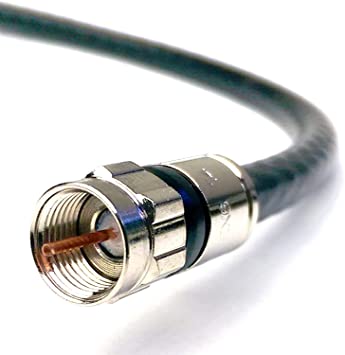Connecting a router to a modem shouldn’t be complicated, and we usually don’t need a technician to connect the two. But, PLDT (Philippine Long Distance Telephone Company) offers a slightly different type of service from most ISPs (Internet Service Providers).
As you might assume based on the title, they offer fiber optic technology. So, we’re going to discuss what a Fibr modem is, the difference between fiber optic and coaxial cables, and how to connect a router to a PLDT Fibr modem.
CONTENTS
What Is a Fiber Modem?
A modem is a device that performs modulation and demodulation. In more detail, it takes the analog signal from the cable that leads to the outlet in our home, a signal that carries information, i.e. provides internet access, and turns it into a digital signal.

This digital signal is transmitted to our router, and the router routes the signal to all the devices connected to the network to provide internet access. This is a simplified version of how it works. It’s to it all about information traveling in various forms.
So, a fiber modem uses fiber optic cables to receive internet access. In this case, PLDT named it Fibr which is quite convenient.
The only thing different between a regular modem and the fiber optic modem is the type of cable it uses to gain access to the internet.
Fiber Optic vs. Coaxial
There are quite a few differences between fiber optic and coaxial cables. They are different in structure and functionality. Also, they don’t use the same medium to transmit information. There are advantages and disadvantages to both.
Coaxial Cable
Coaxial cables transmit information, i.e. the signal, in electrical form. They’re made of a plastic cover, an insulator beneath the cover, an outer conductor shield, another insulator beneath that shield, and an inner conductor.

The reason coaxial cables are commonplace is their low cost, but they are less efficient than fiber optic cables.
They’re easy to install, there is minimum loss of power, and the maximum transmission speed they can achieve is approximately 10 Mbps (Megabits per second).
Fiber Optic Cable
Fiber optic cables transmit information, i.e. the signal, in the form of light. They’re made of plastic and glass because they transmit light.
The case with fiber optic cables is that they have an outer jacket, a loose buffer beneath it, cladding, and a fiber core.
Recommended reading:
- How to Connect Wi-Fi Extender to Smart TV?
- How to Connect Xbox 360 to Wi-Fi Without Adapter?
- How to Connect a Landline Phone to a Modem?
They’re extremely efficient, but they’re not cheap at all. Installing them takes a bit of time and requires a certain level of expertise.
Also, they are lighter and smaller than coaxial cables. A disadvantage is that they can lose power if they’re bent. However, the maximum speed of transmission is approximately 10 Gbps (Gigabits per second).
Why Use a Second Router?
If you’re a PLDT Fibr subscriber, there’s a question of why you would want to use a router. Their modem functions as a gateway, and it emits a wireless signal. You can even connect an ethernet cable to it.
However, you might want to use a second router because you need to extend the network or simply have an option to connect more than 4 devices with an ethernet cable. Nevertheless, here are the benefits of using more than one router:
- Two different networks: By using a second router, you can create another separate network to use for different purposes. This means that you can use one network for LAN purposes such as gaming, printing, large file transfers, etc.
- More wired devices: A second router provides extra ports you can connect your devices to via ethernet cable. Making it into an access point avoids any conflict with the PLDT Fibr modem.
- Larger range: When you already have a router you’re not using, there’s no need to buy range extenders. Simply installing a second router can extend the range if you convert it into an access point. Not converting it results in having two different networks.
How to Connect a Router to PLDT Fibr?
In order to connect a router to a PLDT Fibr modem, we need to put the modem into bridge mode. Because PLDT Fibr works as a gateway, we need to switch it from router mode to bridge mode. So, what is bridge mode?
Bridge mode is the mode of operation of a modem that turns off the NAT (Network Address Translation) function of a gateway. Basically, it stops routing information, and acts only as a network switch. So, how do we put it into bridge mode?
PLDT Fibr is a little different from other modems because of the fiber optic connection, and for that we need to contact PLDT to get access to our ONU (Optical Network Unit). Once we get access, we need to follow these steps:
- Use the granted admin access to log into the ONU, type 192.168.1.1 into the address bar of your browser, and use the credentials to log in.
- There’s going to be a WAN setup section, and we need to click on it.
- Go to Router, and select Bridge.
- There’s going to be an option to Disable NAT, click on it.
- Also, you need to disable the wireless network, so select Disable WiFi.
- We need to leave one port activated (unblocked). So, check Port 1 in the LAN section.
- Once you click on Save, the PLDT Fibr modem will reboot.
- Finally, simply connect the router to Port 1 and turn it on.
Important: Once you change your PLDT Fibr modem to a bridge, you might not be able to access the PLDT admin settings. In this case, you might need to install third-party firmware to get to the settings interface.
Conclusion
Now you know a little more about modems and fiber modems, the basic differences between fiber optic and coaxial cables.
There are advantages in efficiency with fiber optic cables, but the coaxial cables are cheaper and easier to install, and that’s why they’re so widespread.
We’ve answered how to connect a router to a PLDT Fibr modem, and it’s not that difficult.
Remember, once you switch the PLDT Fibr modem into bridge mode, you might not be able to access the settings, but you’ll be able to connect a router to it.

Hey, I’m David. I’ve been working as a wireless network engineer and a network administrator for 15 years. During my studies, I also worked as an ISP field technician – that’s when I met Jeremy.
I hold a bachelor’s degree in network engineering and a master’s degree in computer science and engineering. I’m also a Cisco-certified service provider.
In my professional career, I worked for router/modem manufacturers and internet providers. I like to think that I’m good at explaining network-related issues in simple terms. That’s exactly what I’m doing on this website – I’m making simple and easy-to-follow guides on how to install, set up, and troubleshoot your networking hardware. I also review new network equipment – modems, gateways, switches, routers, extenders, mesh systems, cables, etc.
My goal is to help regular users with their everyday network issues, educate them, and make them less scared of their equipment. In my articles, you can find tips on what to look for when buying new networking hardware, and how to adjust your network settings to get the most out of your wi-fi.
Since my work is closely related to computers, servers, and other network equipment, I like to spend most of my spare time outdoors. When I want to blow off some steam, I like to ride my bike. I also love hiking and swimming. When I need to calm down and clear my mind, my go-to activity is fishing.
